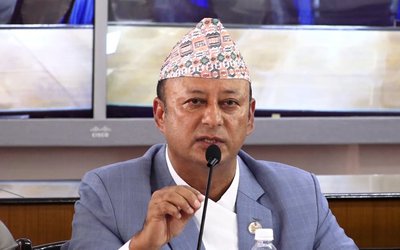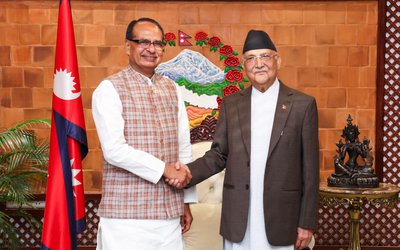The Swedes were perhaps the first to burn their trash and use the energy obtained for heating purposes in a major town. This is an ongoing project which is being copied in other parts of the world. In Sweden they have gone further and adopted a novel idea to deal with plastic waste. The originators of this activity which is being copied in many countries of Europe with enthusiasm are the Swedes. Basic idea is from the Swedish word ‘ploke’ which means to collect. One starts by putting on running shoes, picks up a container, even a plastic bag in one’s hand and jogs around the park or city streets / lanes, stooping periodically to pick up garbage which has been strewn around by ‘Litterbugs’ of the community.
Going around parks with their pet dogs and collecting the ‘poo’ in plastic bags and throwing it in the bin does not solve the problem of the plastic bag which is not biogradeable. Styrocene cups for coffee are also major offenders. What are required are cups made of paper which are biodegradeable or even of plastic which decompose quickly.
In Europe there is awareness about recycling of plastics. The Guardian reported recently that the figure of recycling of plastic in Norway was as high as 95%. Norway recycles each used plastic bottle twelve times. Germany claims to do a lot of recycling too and claims that its efforts are more successful than that of the Scandinavians.
This is not possible in Nepal. Kathmandu Nagarpalika is said to have a plan for management of wastes in co-operation with different municipalities in the valley. The road to the overused dumping site at Sisdole cannot be used during the monsoon season so our wastes pile up all over the town. Long term solution was said to be at Banchare Danda together with the construction of a plant to convert the wastes into compost. Reality is that during this monsoon period the wastes of Kathmandu have not been removed. The hope is that private parties will do this.
However on 1st Asar 2075 (15 July 2018) a stretch of 100 meters of Anupam Tole of Pokhara Municipality of Gandaki Pradesh became the first Municipality of Nepal to asphalt a road with plastic garbage. The wastes were first converted to pellets, mixed with bitumen, spread on the road and finally compressed to make a metalled surface. This section of the road was inaugurated by mayor Man Bahadur KC. Congratulations to all the pioneers of Gandaki for their initiative.
It is interesting to note that this technology of using plastic wastes by converting into pellets and then for building roads has been introduced in India. About 15 kilometres of metalled such road was made in Jamshedpur, the steel city of India. Roads built in this fashion last must longer than those constructed in regular fashion. It is cheaper too as the amount of bitumen required is reduced by almost 10%.
An article in the daily Star newspaper of Bangladesh states that about 15 kilometres of road has been built in Jamshedpur, the steel city of India. As from 2015 the Government of India has made it mandatory to utilise plastic wastes for making roads. Currently as many as 11 states in India have utilised this technology to build as much as 100,000 kilometres of metalled roads in the country.
Apparently plastic use has increased greatly since 2005 and is becoming a problem. To counter it the Bangladesh government is implementing its 3R policy (reduce, reuse and recycle) in two major cities of Dhaka and Chittagong where it is a major problem. The use of plastic, it is felt will make the metalled roads more durable and longer lasting than the existing process. Ghana, in West Africa is building roads out of plastic bags too.
We in Nepal, taking the examples of India and Bangladesh and in line with the initiative of Pokhara should set up medium sized plastic pellets manufacturing units in some selected sites in Nepal for recycling plastic wastes. Our newspapers have reported that a number of our highways and newly constructed roads need urgent repair to lessen the daily accidents that occur. Using these plastic pellets for the building of our roads will solve two major problems that we Nepalis have been contending with.
Later information about plastics that was posted in Facebook is that so far about 6.3 billion tons of plastic have been produced. Of this 12% have been burnt, 9//5 have been recycled. The estimate is that there is currently 4.9 billion tons of plastic remaining in the world. However, plastic is also a necessity for modern day living. For example the keeping quality of much what we eat is preserved for longer periods and does not have to be thrown away if not consumed. It is used for making modern day clothing but plastic has become the bane of modern living. Plastic is a basic component for the development of the information technology which modern living cannot do without. The debit aspect of all this is that because of it erratic disposal, much of it finally ends up in the oceans and leads to the death of fishes, turtles and even birds which thinking that it is eatable end up by being suffocated or clogged up by this indigestible material. The present plastic wastes, if heaped at one site will create a mountain that is bigger than the 8848 metres high Mt. Everest of our land and reach up to the skies.
Sweden now has a shortage of plastic wastes and has to import these for utilisation to heat cities during winter months. Another piece of news is that the Japanese have found in their garbage dumps an enzyme that digests plastic and are developing it further. Is this the saviour of humankind?

Hemang Dixit
The author writes fiction under the name of Mani Dixit. Website: www.hdixit.org.np. Twitter: @manidixithd
- Top Heavy
- Sep 20, 2023
- Most Able?
- Sep 04, 2023
- Changing Times
- Aug 21, 2023
- Nepali Shenanigans
- Aug 03, 2023
- Budget Naataks
- Jun 29, 2023















